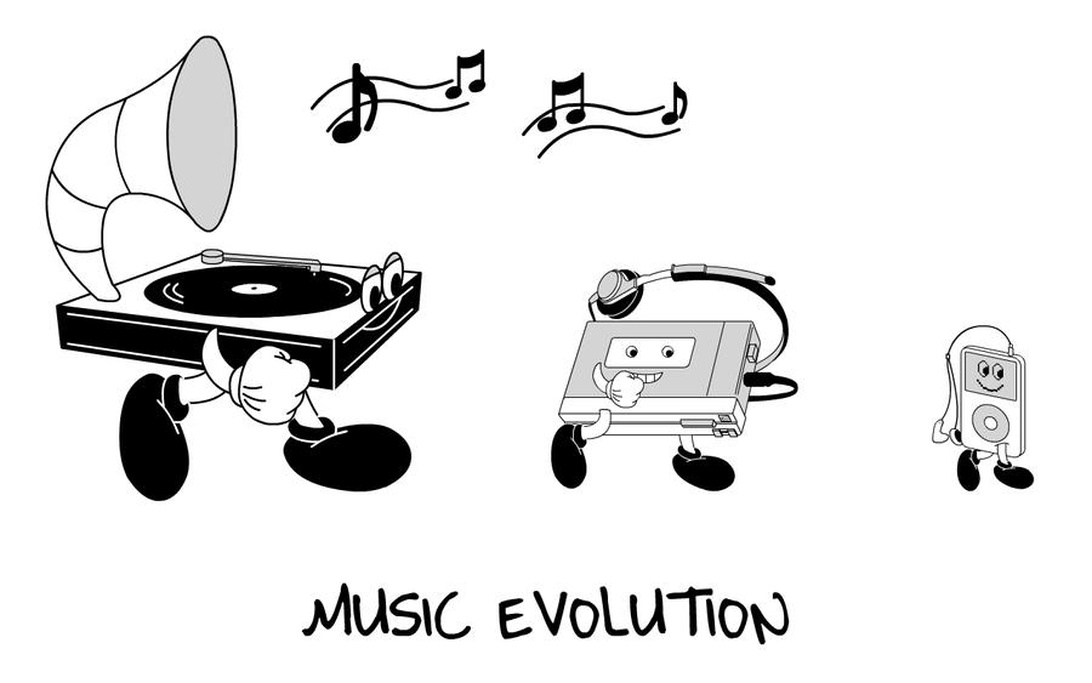The music industry has transformed dramatically in recent decades. The shift from physical formats like CDs to digital streaming has reshaped how we listen to music, impacting artists, labels, and listeners. This journey involves technological leaps, legal battles, and a re-evaluation of music’s value and accessibility.
From Physical to Digital
Introduced in 1982, the compact disc (CD) initially seemed like the ultimate music format, offering superior sound and durability compared to vinyl and cassettes. Global CD sales peaked at over two hundred billion by 2007, as noted by PLAYvirtuoso. However, the rise of the internet and file-sharing services like Napster, reported by Mixdown, signaled a change. Napster, though legally controversial, showed the public’s desire for accessible digital music.
The Rise of Streaming
Apple’s iTunes Store, launched in 2003, legitimized digital music distribution. With the iPod, iTunes offered a platform for buying and downloading songs, a legal alternative to piracy. Yet, streaming services like Pandora (2005) and Spotify (2008) revolutionized consumption by shifting from ownership to access, as Mixdown highlights. A subscription fee granted access to vast music libraries. By 2015, digital revenues surpassed physical format revenues worldwide (PLAYvirtuoso), and by 2016, streaming became the main revenue source in the U.S. (Wikipedia).
Streaming Economics
Streaming’s economic model differs significantly from physical sales. Interactive services (Spotify, Apple Music) allow on-demand song selection, while non-interactive services (Pandora, internet radio) offer curated experiences. This impacts royalties, with interactive streams generally yielding higher artist payouts. However, the per-stream payout is often fractions of a cent, leading to debates about fair compensation.
Impact on Artists
The shift to streaming has profound implications for artists. While offering global reach, the economics of per-stream payouts are debated.
Challenges
Many artists, especially smaller acts, express concerns about low streaming royalties compared to physical sales, a point discussed by Mixdown. The complex royalty system, involving labels, publishers, and intermediaries, adds to the issue. Transparency in reporting is also a concern.
Opportunities
Despite challenges, streaming creates opportunities. Artists can bypass traditional gatekeepers, connecting directly with fans worldwide. Platforms offer promotion tools and engagement features. The longevity of streaming income, where songs earn continuously, contrasts with one-time physical sales revenue, as Royalty Exchange emphasizes. Many artists, such as those using platforms like Patreon or Bandcamp, leverage direct-to-fan engagement and merchandise sales to supplement income. These new models show the move towards artist empowerment in the digital age.
Major Labels vs. Independents
The streaming landscape differs for major label and independent artists. Major labels often negotiate better rates and have more resources. Independents, while potentially earning a larger percentage, often lack the same marketing power. However, artists like Taylor Swift have demonstrated the ability to leverage streaming for massive success, even breaking records, as reported by IFPI.
The Role of Distributors
Digital music distributors have become essential. Companies like TuneCore, DistroKid, and Ditto Music act as intermediaries, explained by Penny Fractions, handling music uploads, rights management, and royalty collection.
Distributor Types
The landscape includes aggregators (TuneCore, DistroKid) for broad distribution, label services providing comprehensive support, and DIY platforms (Bandcamp) for artist control.
Business Models
Distributors use various models: upfront fees, revenue percentages, or subscriptions. Many expand services to include marketing and publishing administration.
Relationships with Major Labels
The dynamics between distributors and major labels are evolving. Some distributors are partnering with major labels, blurring the lines. Examples include Believe Digital’s acquisition of TuneCore, Spotify’s investment in DistroKid, and Sony’s purchase of AWAL, highlighting the strategic importance of digital distribution.
Global Trends
Streaming dominates globally. By 2025, 67% of global music industry revenue is projected to come from streaming (Exploding Topics). In the US, it’s 84%. Exploding Topics also projects streaming revenue to reach an estimated $30 billion by 2027. In Sweden, streaming is the primary consumption method, with Spotify a major player (Svenskarna och internet).
Video’s Impact
Short-form video platforms like TikTok are vital for music discovery (World Economic Forum), driving virality and influencing chart performance.
Technology’s Role
Technological advancements like 5G and smart homes shape consumption (Miquido). Enhanced bandwidth supports high-fidelity audio; voice-activated speakers offer personalized experiences.
Blockchain and NFTs
Blockchain technology could improve transparency in the music industry. It may automate royalty payments, track music usage, and enable new monetization models like NFTs (Non-Fungible Tokens). NFTs offer artists unique ways to sell digital assets and connect with fans, potentially addressing royalty issues.
The Future
The shift from CDs to streaming represents a move from physical to digital, ownership to access, and the rise of intermediaries. While challenges remain, streaming’s convenience and reach have reshaped the landscape. The metaverse, AI, and evolving artist-platform relationships will likely drive further change. The music industry adapts constantly, redefining how we discover and experience music.

